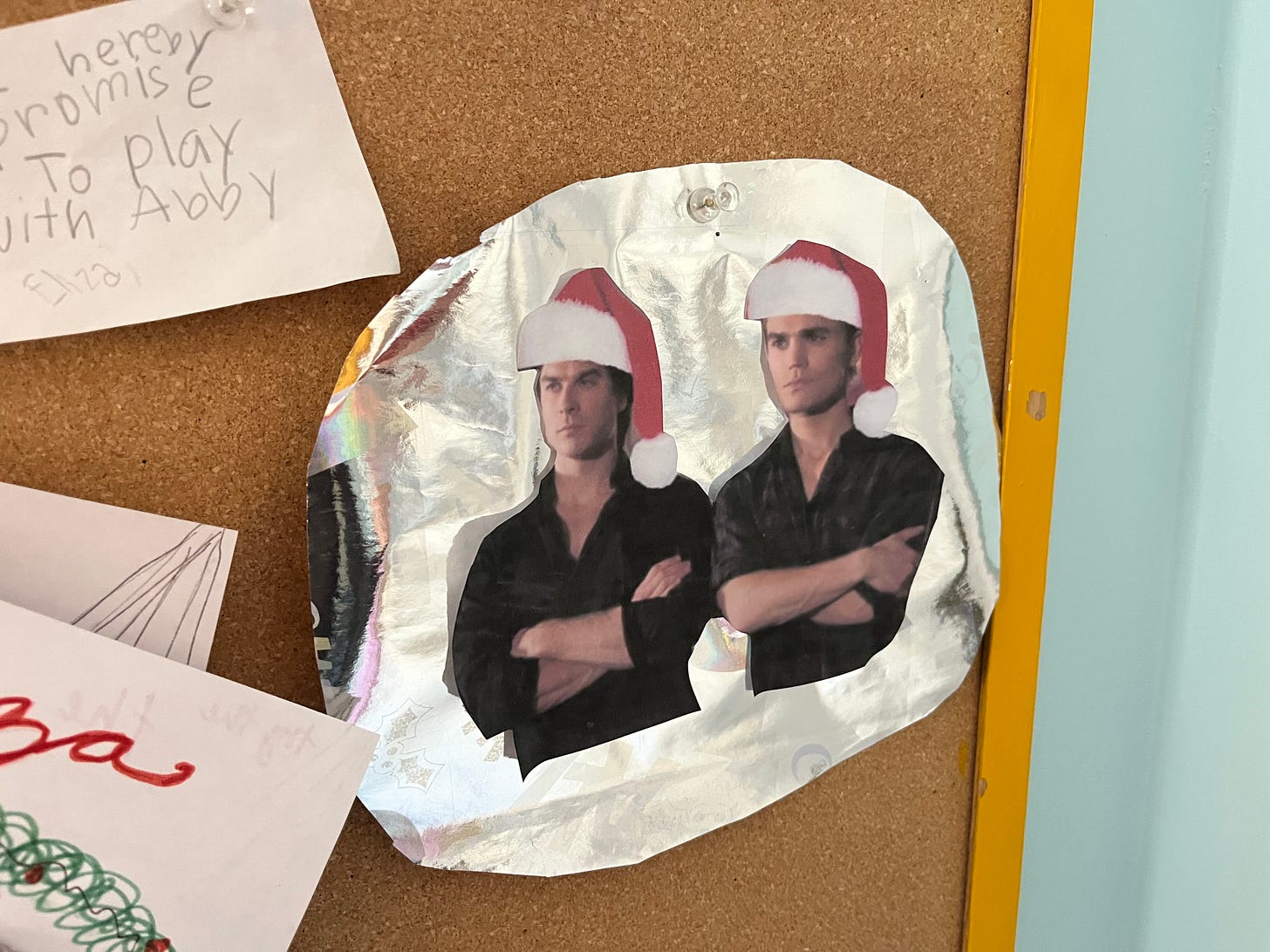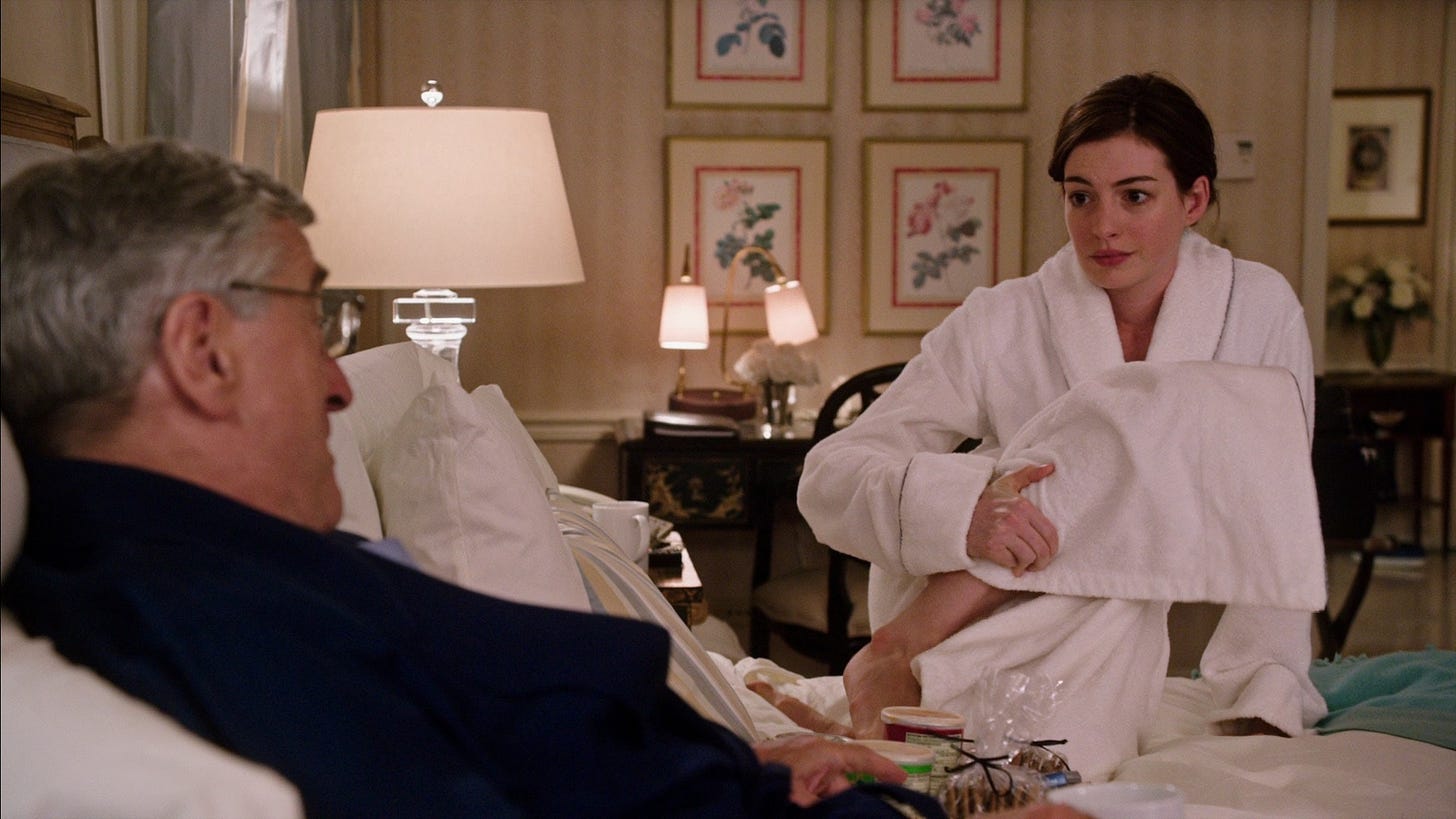This newsletter contains spoilers for Nosferatu (2024). The movie is a remake of Nosferatu (1922), which is an adaptation of the novel Dracula (1897). Nevertheless, you’ve been warned.
On Christmas morning, my baby sister Abby made Alison Roman’s sticky buns and we opened presents. I was thrilled to receive Darn Tough socks, the best socks on earth. Then we all went to see Robert Eggers’s reimagining of Nosferatu at the Coolidge Corner Theater in Brookline, which was playing the movie in 35mm in its big art deco theater — a Christmas gift to the film boy I married.
I attended a press screening of Nosferatu back in October, while I was working on a profile of Eggers for SSENSE. This week, I was excited to revisit the most compelling and chewiest aspect of the movie: the relationship between a young woman named Ellen Hutter (Lily-Rose Depp) and the vampire Count Orlok (Bill Skarsgård).
As Eggers told me, he aimed to distinguish his version of Nosferatu by focusing on Ellen’s experience. In Beetlejuice, Lydia Deetz says she is strange and unusual, but Ellen Hutter actually is. For years, she and Orlok have shared a long-distance psychic connection — a source of nightly torment made possible by her innate attunement to matters beyond the realm of normal human life. Orlok’s obsession with Ellen drives him to buy a crumbling house in her German hometown, where people start turning up dead. While everyone is running around freaking out about the arrival of a plague, Ellen understands that there’s something else going on, and what the solution is: Orlok wants her, and she’s got to give herself up in order to make the killing stop.
Obviously, Nosferatu exists in the grand tradition of stories about entanglements between old vampiric men and young human women. I was a teenager in the aughts, so I couldn’t have escaped these narratives if I’d tried — and, reader, I did not. Abby and I devoured Twilight and The Vampire Diaries, which are equal parts silly and addictive. (Forbidden love is a powerful drug to the teenage brain.) I’ve seen a lot of sexy, youthful vampires in my day.

In the original Nosferatu, directed by F.W. Murnau, Count Orlok was neither sexy nor youthful: he was toothy, bald, and bat-eared, a waxy, creeping cipher. (A fun fact is that my friends in college lovingly called me Nosferatu, which either originated with my affection for the movie or my pale awkwardness.) Eggers, correctly, doubled down and made his Orlok an animate corpse. In his prosthetics, Skarsgård is all sinew and bone, with sunken eyes and peeling, rotten skin. (Importantly, he also has a thick moustache. Initially I found this choice insane, but I’ve come around to it. It humanizes him a teeny bit, gives him a lot of personality, and, given Eggers’s dedication to historical accuracy, is likely appropriate for the time when Orlok was a normal guy.) Eggers told me that he wanted his Orlok to feel like a “folk vampire,” an idea that he spelled out nicely in the film’s press notes: “The folk vampire is not a suave dinner-coat-wearing seducer, nor a sparkling, brooding hero. The folk vampire embodies disease, death, and sex in a base, brutal, and unforgiving way. This is the vampire I wanted to exhume for a modern audience.”
Unlike your pretty-boy vampires who are trying to be good in spite of their blood lust — your Edward Cullens and Damon Salvatores — you absolutely cannot “fix” Eggers’s Orlok. But as putrescent as he may be, his chemistry with Ellen, when they finally meet in the flesh, is off the charts. This is a tremendous accomplishment. Ellen keeps talking about how much she hates him, how he’s ruined her life, but then all of a sudden they’re nose to nose, and you’re like: Kiss??????? Jane Austen would have loved it.
(It’s relevant that, as Abby and my friend Annie have both pointed out, Orlok is just so tall.)
For all the sexual tension on display, this is not a love story. It’s also not really about Orlok. He’s transfixing, but ultimately there’s not much to him: He’s a single-minded guzzling machine, a hollow vector of death. As he says to Ellen in a growl that makes the floorboards quake, “I am an appetite. Nothing more.”
He’s also a manifestation of some awful darkness that Ellen, thanks to her unusual wiring, understands better than most people. This comes through in a touching scene between Ellen and the occult investigator Professor Albin Eberhart von Franz (Willem Dafoe); it’s a brief moment of warmth in a movie that otherwise feels like being chained to an anvil and pushed into the Baltic Sea (in a good way). Both have realized that, to quote Wicked, “this weird quirk [she’s] tried to suppress or hide” will in fact enable her to defeat the vampire. Ellen is the only person who has any power over Orlok — not a whole lot, but enough to manipulate his desires for her own ends. Her deepest shame turns out to be a gift.
Over the last few months, I’ve spent a lot of time puzzling over how to define that darkness, and I think I’ve come up with some answers. Set in 19th century Germany, Nosferatu is all about the uneasy edge of modernity. While traveling to Orlok’s castle in Transylvania, Ellen’s husband, Thomas (Nicholas Hoult), encounters Romanian folk traditions designed to keep evil beings at bay. This is a shock to his system, as he comes from the bustling city of Wisborg, where faith in the innovation of man has supplanted belief in the supernatural, and the twin scaffolds of science and capitalism create a sense of order and safety. (Christianity is a comfort, too, but to a lesser extent, and mostly for the women.)
Ellen’s Orlok-induced torment is an assault on that order — disturbing her wealthy friends and confounding her doctor, with his diagnosis of female “hysteria” — and exposes its insufficiency. The supposed darkness that fills and surrounds Ellen is everything that the people around her have duped themselves into thinking they’ve conquered: irrationality, chaos, death, animal instinct, and female sexuality. The really scary stuff. The stuff that’s never going away.
If you’re looking for holiday activities, I recommend Nosferatu and the icky fascination it will inspire. Once you’ve seen it, please message me with your thoughts on why you found Count Orlok hot!

As a final look back at the outgoing year, here are my top 10 movies that I watched for the first time in 2024 (setting aside the film I just spent a thousand words on). They were judged on the basis of how much they captured my heart. This list includes both new and old releases, and no explanations.
The Taste of Things
Am I OK? (More on this soon… stay tuned.)
Hit Man
The Intern
I Saw the TV Glow
The Brutalist
The Lady Eve
The Depahted
Honorable mentions, unranked: Alien, American Fiction, Anatomy of a Fall, Anora, Barry Lyndon, Civil War, Death Becomes Her, Dune: Part Two (but only for Austin Butler’s Stellan Skarsgård impression), Everybody Wants Some!!, Father of the Bride, The Fly, Furiosa, Good One, Hundreds of Beavers, Mission: Impossible - Rogue Nation, My Old Ass, Problemista, A Real Pain, Singin’ in the Rain, Sing Sing, The Substance, Thelma, The Thing, Twisters, While You Were Sleeping, and Working Girl.
Go watch some movies!
Eliza





To be fair, vampires have evolved to match fantasies… That’s where their power resides!
https://open.substack.com/pub/heyslick/p/why-vampires-suck-and-why-we-need